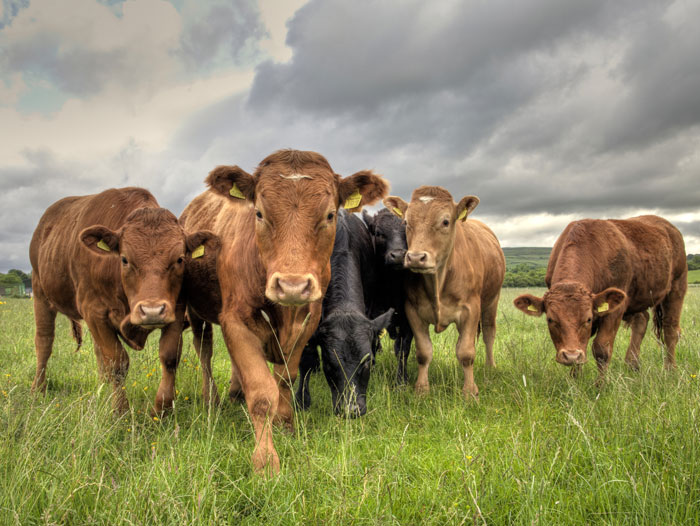A Roadmap to a More Sustainable Beef System
August 21, 2020 | 4 min to read

The security and continuity of our food supply chains depend on healthy soil, clean water and a stable climate—all factors that impact a producer’s ability to grow crops and raise livestock. Businesses are increasingly recognizing these connections and including environmental factors into their business models. One way they do this is by setting sustainability goals related to nature conservation and climate change.
Building a Sustainable Beef System
For several decades, The Nature Conservancy (TNC) has worked with farming and ranching communities—from individuals to local organizations to national entities like the U.S. Roundtable for Sustainable Beef—to collaboratively advance conservation. Recently, TNC worked with Walmart to identify opportunities and actions to improve sustainability in its beef supply. Just last week, Walmart U.S. and Sam’s Club U.S. announced new aspirations to source fresh beef products more sustainably by 2025, with a focus on grazing management and soil health across an additional 12 million acres.
TNC also partnered with the University of Minnesota to analyze McDonald’s beef and chicken supply chains and identify climate mitigation opportunities. Based on this work, McDonald’s is now building programs with their suppliers to meet their company’s ambitious 31 percent greenhouse gas reduction goal.
The work with McDonald’s and Walmart led TNC scientists to develop a Roadmap for a Sustainable Beef System. The Roadmap distills scientific evidence related to beef production practices and can help companies identify opportunities and make supply chain improvements, while tracking progress toward their environmental and other sustainability goals. For example, TNC is using the Roadmap to work with Tyson to help operationalize strategies in their beef supply chain that empower producers to adopt sustainable practices on the ground. Using science as a guidepost, TNC is helping businesses create solutions that are both environmentally friendly and economically favorable, while delivering a product that meets consumers’ expectations.
Sustainability needs to be business-as-usual in the U.S. beef industry in order to ensure long-term food production, economic security for ranchers and their communities, and a healthy environment for us all. Seeing some of the world’s largest purchasers of beef take proactive steps to achieve sustainability within their own supply chains signals tremendous momentum in that direction. Important strides are being made, but there’s still so much more to do.
A Vast Environmental Footprint
The environment and the beef industry are intricately connected. In the U.S., cattle are grazed on 775 million acres of grasslands, rangelands and pastures. Corn used for feed is grown on 30 million acres of farmland. Together, this spans more than 40 percent of the lands in the country, which are stewarded by an estimated 2.6 million farmers and ranchers.
With such a vast footprint, the beef industry is well positioned to make substantive contributions to sustainable food production in ways that benefit producers, communities and nature. Well-managed livestock grazing is compatible with—and even beneficial to—many species and habitats. When these working lands are healthy, they play a vital role in mitigating climate change by capturing carbon from the atmosphere and storing it in the soil.
To achieve these environmental benefits, we must listen to ranchers and farmers to better understand the barriers to implementing sustainability practices, and then work together to identify opportunities within the supply chain to eliminate those barriers. Ranchers like Meredith Ellis of Texas recognize the importance of soil health and sustainable grazing practices to help sequester carbon, withstand extreme weather events, safeguard water quality, support biodiversity, and provide consumers with sustainable beef they can feel good about buying. (Check out her story in this video by the National Grazing Lands Coalition.)
Resilient ecosystems and agriculture operations are the foundation of a secure and profitable food system. Working together, we can feed a growing a planet while ensuring a future where people and nature thrive.
About The Nature Conservancy
The Nature Conservancy is a global conservation organization dedicated to conserving the lands and waters on which all life depends. Guided by science, we create innovative, on-the-ground solutions to our world’s toughest challenges so that nature and people can thrive together. We are tackling climate change, conserving lands, waters and oceans at an unprecedented scale, providing food and water sustainably and helping make cities more sustainable. Working in 79 countries and territories, we use a collaborative approach that engages local communities, governments, the private sector, and other partners. To learn more about our agriculture work, visit www.nature.org/workinglands or follow @NatureAg on Twitter.
